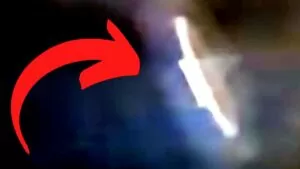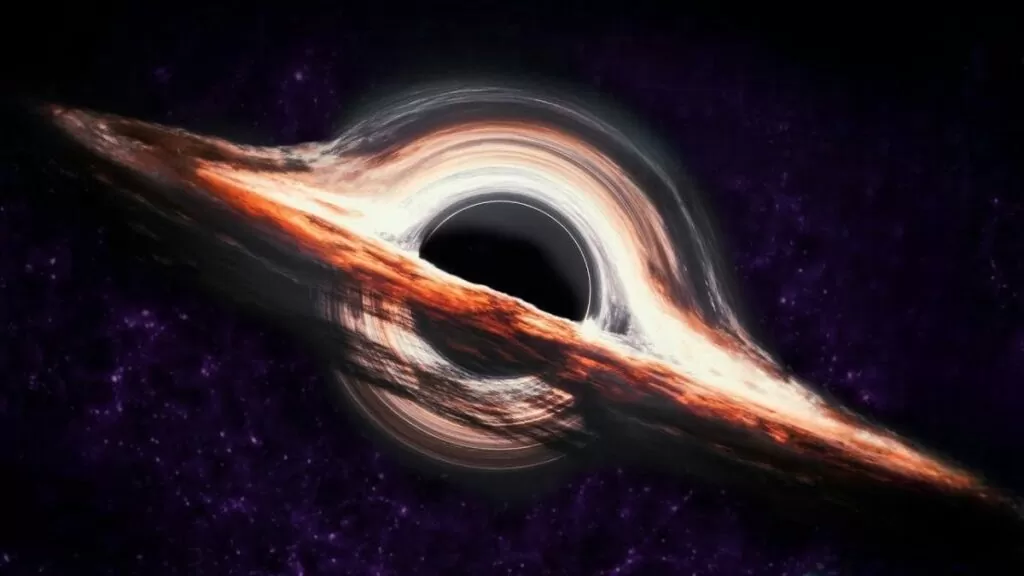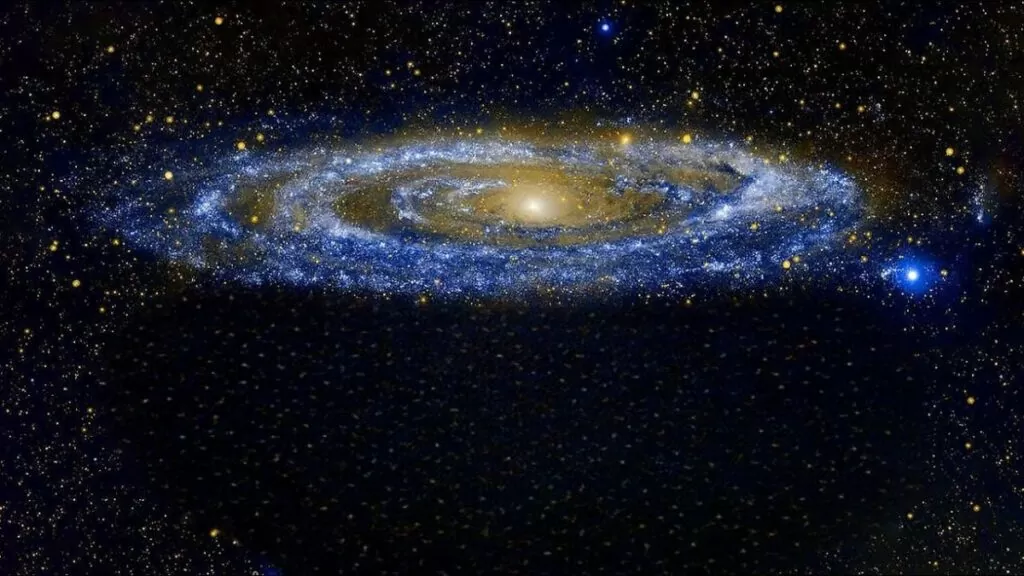
A 10-kilometer-wide spacecraft struck Earth 66 million years ago, triggering the fifth mass extinction.
The impact wiped out nearly 75% of life on the planet and specifically led to the extinction of non-avian dinosaurs. It also caused tsunamis and caused wildfires that spread across the continents.
Additionally, beneath the present-day Yucatán peninsula in Mexico, the impactor dumped a massive 180-kilometer-wide crater that is now known as the chicxulub crater.
Scientists have long held the belief that the extinction event was sparked by a single enormous rock fragment.
However, they have now discovered evidence that the Chicxulub impactor did not arrive on its own, making a groundbreaking discovery.
The new Nadir crater, on the other hand, was created by a companion’s impact.
So, how did researchers find this crater?
How do they know that its impactor was a factor in the dinosaurs’ extinction?
Last but not least, how many more of these craters from that time period remain undiscovered?
The explanation for the Nadir crater’s discovery is quite intriguing after three to four seconds.
It was accidentally discovered while a geologist in Edinburgh was working with seabed seismic data.
At first, he was analyzing data on seafloor spreading.
A topographical cycle opened the Atlantic sea by floating separating the African and American landmasses.
He anticipated flat sedimentary sequences on the plateau while analyzing the data.
However, what he observed was completely out of the ordinary.
Under the seabed, scientists discovered a five-kilometer-wide depression with unusual characteristics.
The depression, which was almost circular, had a raised rim and a very prominent uplift in the middle.
In addition, it had structures that pointed to chaotic sedimentary deposits tens of kilometers away from the crater.
On Earth, craters typically form when a volcano bursts or when processes of salt withdrawal occur.
However, Nadir lacked the characteristics of conventional craters.
Instead, its characteristics resemble impact craters caused by asteroids striking it.
The team came to the conclusion that the Nadir depression might have been caused by a similar cosmic impact after considering these facts.
The Nadir crater has a diameter of only about 9 kilometers and is 350 kilometers from the coast of the African nations of Guinea and Guinea Bissau.
The crater is covered in marine sediment that ranges in thickness from 300 to 400 meters, and the current water depth is approximately 900 meters.
We know from Nadir’s size that it is far from the chicxulub crater.
However, when its position was compared to various geological layers, the researchers came to the conclusion that it is 66 million years old.
Even though the exact time of the impact and the age of the crater is uncertain, the best estimates show that this age corresponds to the Chicxulub impact era, suggesting that the two impacts may have been related.
For a more in-depth understanding of the crater, the researchers used computer modeling and simulation.
They discovered that a 400-meter-wide asteroid colliding with 500-800 meters of water could have created the crater.
Along with a 6, this would have led to widespread regional devastation.
a tsunami with a height of 900 meters that is traveling around the world and has a magnitude of 5.
The energy set free from the Nadir effect would have been multiple times more prominent than the tidal wave brought about by the submerged ejection of the hunga-tonga hunga ha’apai (elocution) fountain of liquid magma on January 15, 2022.
The asteroid’s estimated size would be comparable to that of Bennu.
There are a few possibilities when connecting the chicxulub impactor to the Nadir impactor.
Small moonlets typically accompany large asteroids.
Therefore, one of the chicxulub impactor’s moonlets may have been the Nadir impactor.
Additionally, there have been documented instances of dual impacts throughout history.
This possibility is further supported by the lockne and mlingen craters in Sweden, which dates back 470 million years.
According to the second scenario, the parent asteroid or comet may have broken up into several smaller and larger pieces during a previous close encounter with Earth, resulting in the birth of two impactors of the same age.
Similar to how comet shoemaker-levy 9 was torn apart by Jupiter’s tidal forces and smashed into the planet’s atmosphere in 1994, this would have occurred if something similar had occurred.
The team also thinks of an impact cluster, in which a main-belt asteroid collision causes a period of frequent meteorite impacts, in addition to these two possibilities.
Additionally, we might be able to construct a Boltysh crater with an estimated age of 65 if this theory is correct.
4 million years old, belonging to the same group as Nadir and Chicxulub.
However, it is unclear whether any of these theories are true.
Nadir could be nothing more than a collapsed volcanic structure without any connection to Chicxulub.
Risky impactors with a diameter of almost 50 meters collide with the earth nearly every 900 years if we take into account the earth’s history of such high-velocity impacts.
Additionally, approximately every one million years, impactors with a diameter of more than one-kilometer strike, pose a global catastrophe risk.
However, little is known about impactors with high precision of this kind.
It is anticipated that marine target impacts will account for the majority of craters on Earth because more than 70% of the surface is covered in water.
However, marine impact events account for only 15 to 20 confirmed hypervelocity impact craters.
Therefore, if the Nadir crater establishes a cosmic connection, it will become one of less than twenty marine impact craters that have been confirmed on Earth thus far.
It will also force us to reevaluate our conventional understanding of how the dinosaurs came to an end and what else might have happened.
Is Chicxulub related to other people?
And if that’s the case, where did they place their signatures?
Will additional craters like Nadir be discovered in the future?
We hope to find answers to all of the questions in the future!
Explore:











